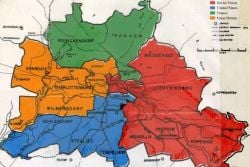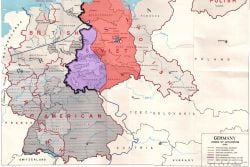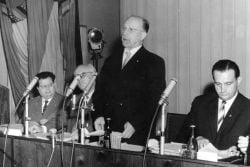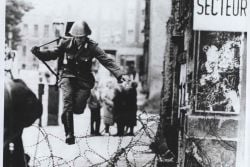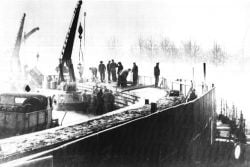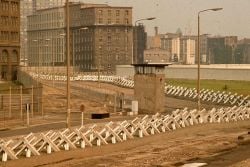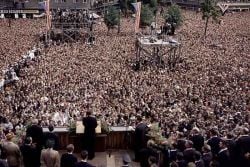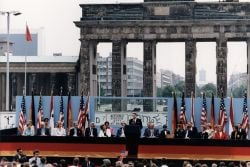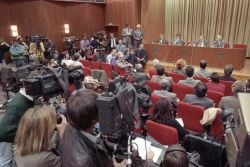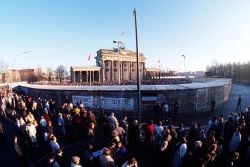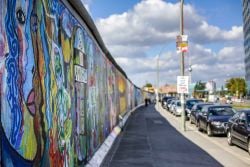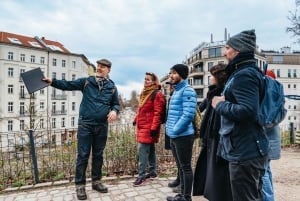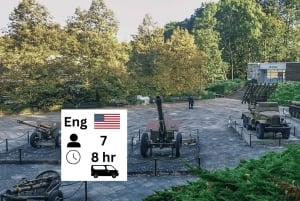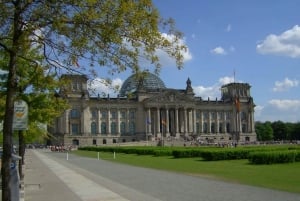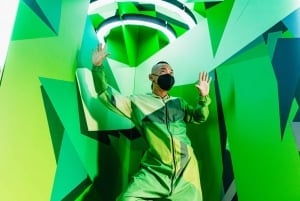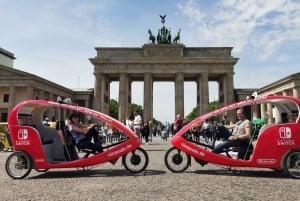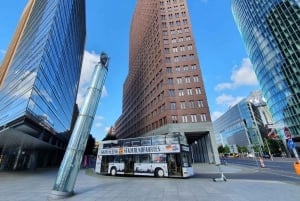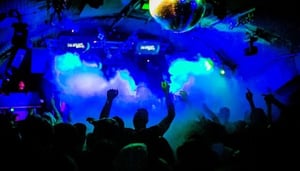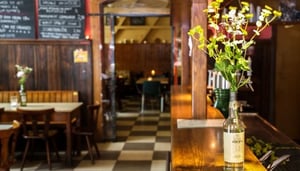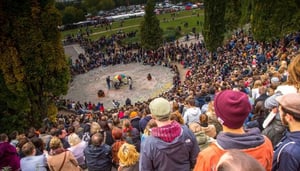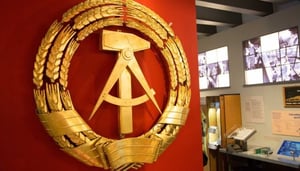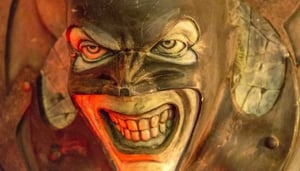Berlin Wall History
1950 The border between East Germany (the German Democratic Republic, or GDR) and West Germany (the Federal Republic of Germany or FRG) is essentially open and can be easily crossed in a number of places. This provides various options for citizens of the GDR wishing to defect to the west.
1960 Since the closing of the inner German border in 1952, some 3.5 Million East Germans representing around 20% of the population have left the country via the loophole that is West Berlin. Even more problematic is that the majority of those defecting are highly educated and skilled workers, representing a significant “brain-drain” for the GDR which, if left unchecked, would have crippled the fledgeling nation.
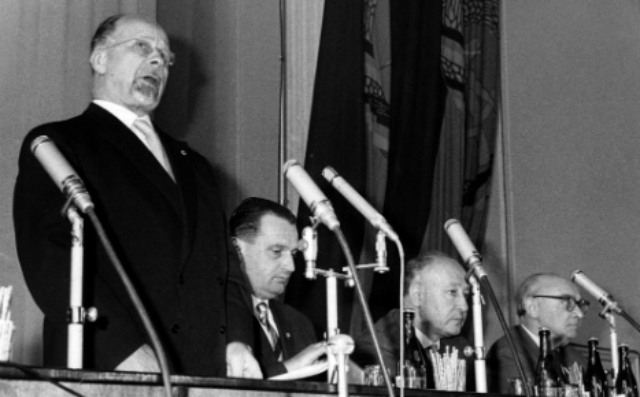
Image: Walter Ulbricht during the famous press conference CC-BY-SA-3.0-de
1961 15th June, First Secretary of the GDR, Walter Ulbricht, states at an international press conference “Niemand hat die Absicht, eine Mauer zu errichten!” (Nobody has the intention of erecting a wall). Interestingly, was the answer to a general question about the proposed border - It was Ulbricht himself who first mentioned the word wall...
1961 12th August: GDR Leadership attends a gathering in Döllnsee, a forested area north of Berlin where Ulbricht signs the order to secure the Border. At midnight, East German police and military personnel get to work.
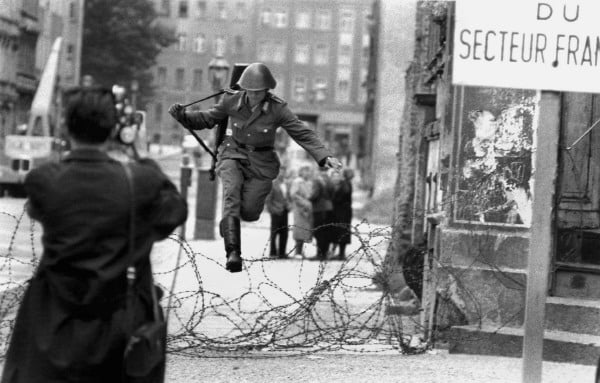
1961 15th August: East German soldier, Conrad Schumann, seizes an opportunity to escape over the border, still just a barbed wire fence. The photograph would become one of the most widespread images of the period.
1961 16th August: Just a few days after the initial barbed wire is rolled out, work commences on a brick “second generation” wall.
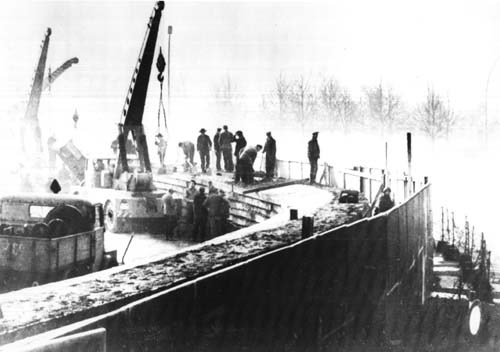 Image of brick workers laying the Berlin Wall (Image is in the Public Domain)
Image of brick workers laying the Berlin Wall (Image is in the Public Domain)1961 24th August: Günter Litfin, a twenty four-year-old tailor becomes the first person to be shot and killed trying to cross the Berlin Wall. Boldened by reports of successful crossings reported on West Berlin radio he attempted to cross the Spree canal at the Humboldt harbour, not far from where the Berlin Hauptbahnhof stands today. Unfortunately, he wasn't to know that just hours before, border guards had received their first shoot-to-kill orders and after first firing a warning shot, the guard then shot and killed him, only 10 metres from the shore.
 Image: Death Strip of the Berlin Wall with Guard tower and anti-tank devices. (CC-BY-SA-3.0-de)
Image: Death Strip of the Berlin Wall with Guard tower and anti-tank devices. (CC-BY-SA-3.0-de)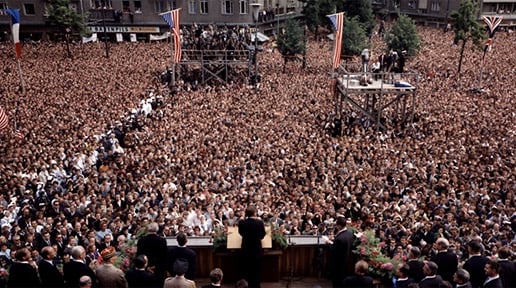
1975: At a cost of around US$3,638,000 the fourth generation wall is erected, known officially as "Stützwandelement UL 12.11" (Retaining Wall Element UL) or Grenzmauer 75 (Border Wall 75). Consisting of 45,000 separate sections of reinforced concrete with a height of 3.6m (12ft), crowned with a smooth pipe, this is the most common incarnation of the wall seen in photographs and the surviving sections of the wall in Berlin. Much research and development went into this version, with the concrete able to withstand being rammed by car. Certain sections were made weaker so as to allow tank access in the event of war with the western powers stationed in West Berlin. Image CC-BY-SA-3.0-de.

1989 September – Protests break out all over the GDR in what has come to be known as the Peaceful Revolution. On November 4th over 500,000 people gather at Alexanderplatz to protest against the regime.
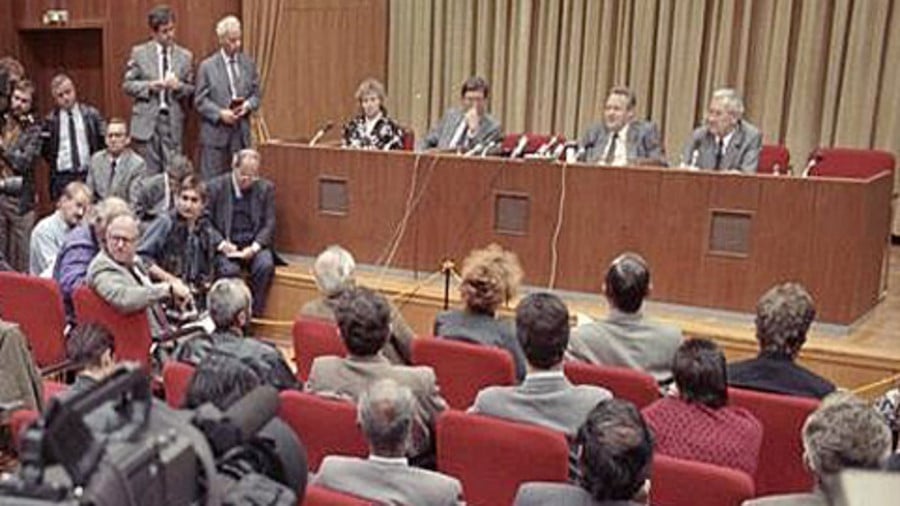
1989 9th of November (cont.) Excerpts from the press conference are played on the evening news of the two main stations in West Berlin which the majority of East Berliners also receive. Upon hearing the broadcast, East Berliners gather in their thousands at the various checkpoints along the wall. The guards, overwhelmed by the superior numbers have no way of holding back the tide of people.
1990 105 artists create the world's largest Open Air Gallery on a section of the Berlin Wall now known as the East Side Gallery.
1990 Although several new border crossings have been opened in the previous 7 months, and many souvenir hunters (nicknamed Mauerspächte – Wall Woodpeckers) have caused significant damage creating other unofficial crossings it is on the 30th of June 1990 that the official removal of the Berlin Wall commences.
Berlin Wall History is a complex topic and we hope that we have distilled it down into a digestible form. Today, the Berlin Wall has been erased from the Berlin landscape except for a few selected sites. If you are looking to see the Wall for yourself have a look at the article on our Top 10 Berlin Wall Locations.


